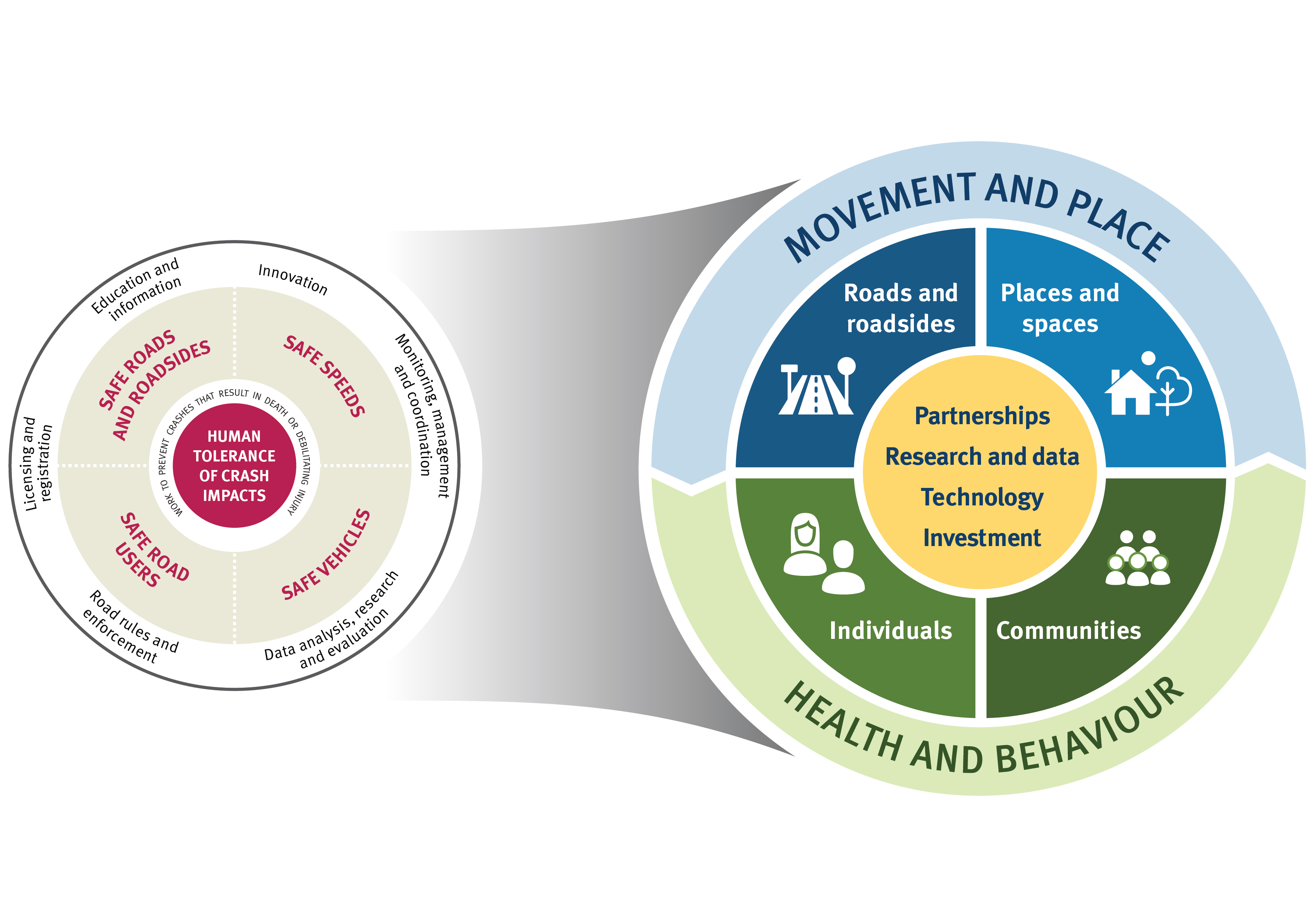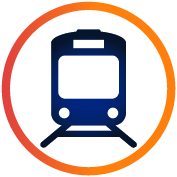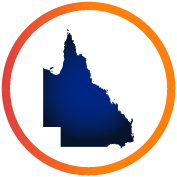
Market conditions and project estimation confidence
Like all states and territories, Queensland is experiencing national and international economic and market uncertainty, along with significant cost escalations in construction costs, limited labour supply and nation-wide record levels of infrastructure investment, which impact on project budgets through various stages of the project lifecycle.
The level of reliable detail about project costs increases over time as projects progress from planning through to delivery and finalisations stages (illustrated in Figure 3). In some cases, funding commitments may be allocated towards a project or/program of works, which may change as planning and development activities progress, scope is confirmed, cost estimates are developed, and specific investments are prioritised for delivery. Confidence in project detail grow as options are considered, concepts refined, site conditions investigated, designs progressed, and construction contractors engaged in the process.
Figure 3: Ideal cost estimate certainty throughout the project lifecycle (adapted from US Government Accountability Office, 2020)

In response to adverse global and local market conditions, TMR continues to implement initiates to help manage cost-related risk. Confidence in project detail, particularly in the lead up to construction commencing, is described in district tables with endnotes for three critical development phases: Pre-Business Case; Business Case to Detailed Design; and Procurement to Contract Award.

Construction costs and market capacity
While Queensland has been experiencing extraordinary escalation in construction costs and the supply of materials, TMR is committed to ensuring that the delivery of our transport and roads infrastructure program represents value-for-money.
This includes providing sustainable outcomes for our industry partners. Collaboration with the civil construction industry, building capability in collaborative behaviours and integrating them into TMR's procurement and contracting framework has been critical to building the market capacity with the relevant skills, resources and experience to deliver the QTRIP program of works.
TMR is the only government agency to have a forward-looking, four-year capital plan and the only transport agency in Australia to publish this plan. This enables planned delivery of future projects to progress smoothly and provides industry and local government with effective business and workforce planning.

Population growth and managing transport demand
Queensland's population was estimated to be around 5.5 million in 20231 and is predicted to increase to around 6.7 million by 2038 and around 7.1 million by 20432. Most of this increase is likely to continue to be in South East Queensland, coastal communities and regional centres with industry growth.
Queensland has seen substantial investment in infrastructure and public transport services over the past decade to cater for this growth. We continue to face significant challenges to manage the ongoing impact of this growth, harness opportunities and mitigate associated risks, such as increased congestion.

Embracing technology
New technology provides significant opportunities for managing a growing population, helping to address the challenges of congestion, accessibility, sustainability, reliability, safety and network resilience.
We can use new technologies to position the transport system to meet future needs – creating a single integrated transport system that anticipates, rather than just responds to, customers' needs.
Smart and connected technologies, and access to real time information, enable customers to make more informed transport choices and helps optimise our transport network operations and reliability.
Emerging automated vehicle technologies and service models such as Mobility as a Service, which incorporate demand responsive and shared transport services, will also provide improved and affordable transport access options, including for people with disabilities, older people and people who do not have a driver's licence.
Digital engineering, including Building Information Modelling, provides opportunities throughout the infrastructure lifecycle from planning to design, construction, and operations and maintenance.

Road safety
While progress has been made over many decades to reduce road trauma on Queensland's roads through the introduction of a variety of road safety initiatives, there are still significant challenges to overcome.
We are steadfast in our commitment to reduce the incidence of road trauma through ongoing safety upgrades to the state-controlled road network. We continue to deliver a program of targeted road safety infrastructure improvement programs delivering high-benefit treatments to reduce crashes.
Importantly, our Road Safety Policy and 4-year strategic plan further embed the Safe System approach to road safety, which was originally introduced to Queensland in 2015 and retained at the foundation of the Queensland Road Safety Strategy 2022–31. The strategy integrates the concepts of Movement and Place and Health and Behaviour into the new Queensland Model for Road Safety, which organises our priorities across four pathways as outlined in Figure 4.

Figure 4: The Safe System approach and the Queensland Model for Road Safety
Rather than simply 'blame' crashes on individual behaviour and choices, the Safe System approach places human frailty at the centre and observes that there is a limit to the physical forces the human body can withstand before debilitating injury or death results. On the road, people will make mistakes, but should not be penalised with injury or death for doing so. This means all elements of the 'system' need to be forgiving. The cornerstones of this approach are safe roads and roadsides, safe speeds, safe vehicles and safe road users. These 4 factors determine the forces exerted during the crash, and therefore the seriousness of the outcome. Realising the benefits of the Safe System approach requires everyone involved in each of the elements of the system to understand the importance of their role in saving a life.
Other critical inputs to the Safe System are:
- enforcement strategies to encourage compliance and manage non-compliance with the road rules
- understanding crashes and risks through data analysis, research and evaluation
- managing access to the road through licensing drivers and riders and registering vehicles
- providing education and information
- innovation
- good management, monitoring, communication and coordination.
In the Queensland Road Safety Strategy 2022-31, the Safe System remains at the foundation of Queensland's approach to road safety, however a new model has been developed that aims to reach beyond the traditional transport sector to reach a broader set of stakeholders to help reduce road trauma.
The Queensland Model for Road Safety integrates the new concepts of Movement and Place and Health and Behaviour and organises road safety strategic priorities across 4 key pathways and 4 enablers. The 4 pathways include Roads and roadsides, Places and spaces, Individuals and Communities, with the 4 enablers of Partnerships, Research and data, Technology and Investment working across all pathways.

Freight needs
Queensland's freight system is a key enabler for the vital components of our economy with efficient freight movement being integral to Queensland's global competitiveness and economic performance.
The Queensland Freight Strategy – Advancing Freight in Queensland, developed in partnership with the Queensland Ministerial Freight Council, sets a 10-year vision for the state's freight system. The Queensland Freight Strategy vision aims to create an integrated, resilient and safe freight system integral to supporting Queensland's economic prosperity.
The Queensland Freight Strategy is implemented through the Queensland Freight Action Plan which outlines a range of activities that the industry, the community and all levels of government will undertake to ensure logistics movements throughout the agricultural, mining, industrial and retail sectors provide the best outcomes for Queensland.
A significant portion of the road and rail networks in Queensland forms part of the nationally accredited Key Freight Route network that connects Australia's freight system, including sea and airports and intermodal terminals.

Accessibility and Inclusion
TMR is providing accessible and inclusive transport products, services, information and infrastructure across Queensland as outlined in the department's Accessibility and Inclusion Strategy (AIS). This focus will ensure that everyone can participate in our community and access employment, health, education, recreation and culture.
TMR's aspiration under the strategy is to be a leader in the provision of dignified, accessible and inclusive transport products, services, information and infrastructure. To do this, we will work collaboratively with our delivery partners, service providers and all levels of government to ensure alignment with government objectives, broader human rights and legislative obligations.
TMR's Accessibility and Inclusion Plan 2023-2024 (AIP) was developed to outline the practical actions TMR will take over the two-year period to deliver on the AIS. The AIP outlines 27 actions across the three key pillars of Strategy, Culture and Process. A review of the AIP is being conducted during 2024, with the development of an updated plan to be completed based on key learnings, co-design activities and emerging trends.

Brisbane 2032 Olympic and Paralympic Games
The Brisbane 2032 Olympic and Paralympic Games are expected to accelerate major transport infrastructure projects across South East Queensland. Not only will the Games generate significant tourism visitation during the event, but it is likely this will continue after the Games. Both mass transport and active transport infrastructure is required to support the movement in between precincts that will be critical to support the Games in the short term, and South East Queensland's growing population in the longer term.

Funding arrangements
Works on the Queensland transport network are primarily funded by the Queensland Governments and Australian Government. The Australian Government has primary responsibility for funding and maintaining the National Land Transport Network and contributes funding to projects off the National Land Transport Network through programs like the Road Safety Program. The state funded component includes revenue from motor vehicle registration and proceeds from infringements (such as camera detected offences). Some projects are partly funded by local government and developer contributions.
There remains a high expectation from the community that government will continue to address transport costs and accessibility through the integration of land-use planning and transport infrastructure. We continue to work on this integration, ensuring the right projects are delivered at the right time.
The Queensland Government recognises that private sector investment helps achieve strong jobs growth and sustainable economic development. Investment facilitation and partnerships are available for major investment and business propositions that demonstrate a strong potential for being delivered and that align with the Queensland Government's priorities.

Rural, remote and Aboriginal and Torres Strait Islander communities
Queensland's regional prosperity, and associated transport network, is heavily influenced by the vast distances between regions and cities, the concentration of the population in South East Queensland, isolated resource production areas and export driven markets. To address these challenges, the Queensland Government continues to explore funding options for transport infrastructure improvements within rural, remote and Aboriginal and Torres Strait Islander communities.
QTRIP serves local communities through a project delivery approach that, where possible, engages local businesses, and creates employment and training opportunities for residents.
We are committed to reconciliation with the Aboriginal and Torres Strait Islander people of Queensland, with the Indigenous Strategy Roadmap 2023-25 and its supporting Action Plan outlining how the department is prioritising its relationships with First Nations people. In this regard, we support Indigenous participation policies and frameworks that prioritise Aboriginal and Torres Strait islander employment and supplier use targets for transport and road projects.
Through infrastructure programs such as the Aboriginal and Torres Strait Islander Transport Infrastructure Development Scheme, the Torres Strait Islands Marine Infrastructure Program (providing funding for upgrades to jetties, barge/boat ramps and other marine facilities) and the Cape York Region Package Stage 2 (joint funded with the Australian Government to progressively seal priority sections of the Peninsula Developmental and community access roads), the department is well-placed to provide education, training and employment opportunities for Indigenous people.

Environment, climate change, sustainability and heritage management
We are committed to providing a single integrated transport system that contributes to Queensland's environmental, economic and social sustainability outcomes. To manage the increasing pressures of extreme weather and climate change, a growing population and land use changes, we are committed through our Environmental Sustainability Policy to plan for and deliver resilient, adaptable and multimodal infrastructure to meet our customers' needs and community expectations.
We aim to align our infrastructure and services with stakeholder expectations, including reducing our environmental footprint and increasing network resilience to climate change. We are building a cleaner, greener transport network that encourages zero emission transport solutions and contributes to Queensland's net zero emissions future.
This includes promoting and supporting the adoption of zero emission vehicles and transport (including cycling and walking), facilitating the use of more sustainable travel for both people and goods, and through our Waste 2 Resource Strategy which has a specific focus in using recycled (low emission) materials and renewable energy to deliver, operate and maintain the transport system.
Our Cultural Heritage Organisational Policy and Process Manual ensures we proactively manage Aboriginal, Torres Strait Islander and historic heritage sites, places and values during project delivery and asset maintenance, in accordance with State and Federal legislation. We employ a statewide team of Cultural Heritage experts and strives to build long-term, meaningful relationships with Aboriginal, Torres Strait and non-Indigenous heritage stakeholders.
We also work closely with the Queensland Reconstruction Authority, the state's stand-alone disaster resilience and recovery agency, to restore road and rail networks following events and to improve the resilience of the state's road network to natural disasters.

Working with local governments
Under the Roads and Transport Alliance, local governments partner with TMR districts to form 17 Regional Roads and Transport Groups (RRTGs) that make local transport infrastructure investment decisions based on regional priorities.
These groups receive an annual funding allocation from the Transport Infrastructure Development Scheme to fund projects in accordance with community need. Projects are prioritised by the RRTGs using a robust program development process to determine future investments for local transport infrastructure assets.